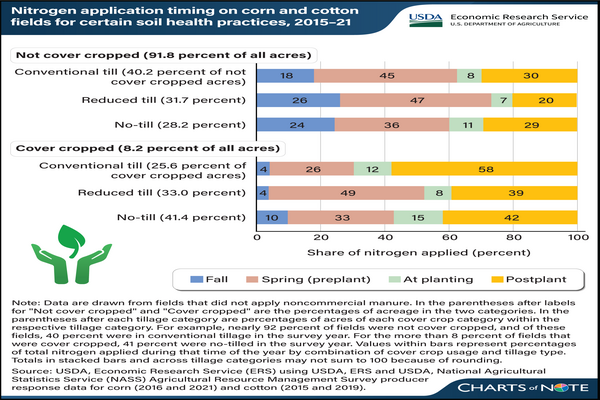 |
|---|
Source: USDA
Washington, DC — U.S. corn and cotton farmers who use cover crops are more likely to implement other conservation practices with soil health and environmental benefits, compared to farmers not adopting cover crops. Cover crops are crops planted between commodity crops that can improve soil health and downstream water quality.
Researchers with USDA, Economic Research Service (ERS) used producer survey responses from the Agricultural Resource Management Survey to find that 8.2 percent of corn (2016 and 2021) and cotton (2015 and 2019) acres had a cover crop. Of the acreage with cover crops on cotton and corn fields, 41.4 percent also adopted no-till (growing crops without tilling or plowing the soil), and 33.0 percent adopted reduced till (growing crops with less soil disturbance than conventional tillage systems).
This is compared to 28.2 percent and 31.7 percent, respectively, for fields without cover crops. Data also indicate that farmers with cover-cropped fields use different nutrient management practices and often apply nitrogen fertilizer later in the season.
Fertilizer applications during the cash crop growing season can help improve crop growth and minimize environmental damage due to nutrient losses that can occur with fall and early-season nitrogen application.
Across all tillage systems, cover cropped fields were more likely to have nitrogen applied in the planting or post-planting periods, especially for conventionally tilled fields, where the largest combined proportion of nitrogen was applied at or after planting (70 percent).



